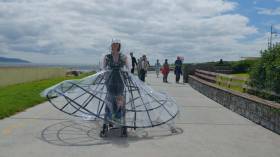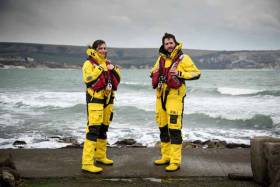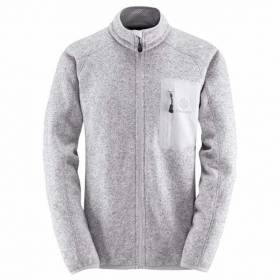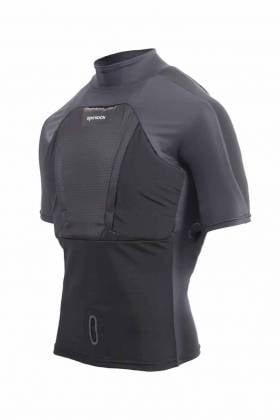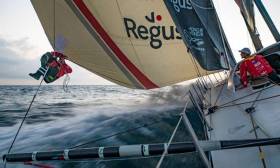Displaying items by tag: marine clothing
Save Now in CH Marine’s Sailing & Leisure Wear Sale
Save now on CH Marine’s fantastic range of sailing and leisure wear as the Cork chandlery’s sale is now on.
Choose from items with the right combination of practicality and style from top brands like Musto, Zhik and Dubarry.
These include the Zhik Z-Cru fleece jacket for men and women, normally €165 but now on sale for only €96.95 — more than 40% off.
Stocks are limited so act quick and grab these great deals now!
We've all been there, forgetting to wash a sailing jacket only to discover the next time you pull it out of the bag, the zip is corroded. It's normally due to not being washed out thoroughly with fresh water that expensive marine clothing gets destroyed.
There are multiple tactics you can use to remove salt from zippers and keep your items in working condition.
Salt buildup often occurs on the zippers of sailing jackets and trousers, boots and bags. Zippers should be cleaned of salt buildup so that they don’t stick or corrode.
In his latest product care video, Viking Marine's Ian O'Meara from Dun Laoghaire Harbour on Dublin Bay explains how salt is the natural enemy of sailing wear. Ian gives some tips on how to prevent salt from destroying your zips.
Calling Seafarers' Expertise on Weatherproof Wear
Seafarers know there is no such thing as bad weather, only bad gear.
A Galway 2020 European capital of culture project is hoping to tap into some of that knowledge, as part of an international design contest for weatherproof wear.
The competition has been initiated by “Hope it Rains/Soineann nó Doineann”, a Galway 2020 project which aims to effect a cultural change in Ireland’s relationship with weather and climate.
“Hope it Rains” involves six multi-disciplinary projects throughout Galway city and county, focusing on renewable energy, weather-proofing, green infrastructure, outdoor play, health and well-being and our unique heritage.
Conceived and directed by Dr Ríonach Ní Néill, and produced by Ciotóg and Milestone Inventive, the project hopes to inspire “citizen inventors” who will collaborate with experts in art, design, sport and science.
Ms Ní Néill said that its new contest, entitled “Weatherproof Me !” is seeking “designs that transform our behaviour in the wind, the rain and the dark”.
“They can be provocative, innovative, playful – and also challenge our attitudes and actions on climate change and water management,” she says.
Five winners will be selected by an international judging panel to produce and deliver their designs.
Inter-disciplinary artist and designer Jeni Roddy, who is one of the judges along with Dr Ní Néill, explains that “Irish people, including kids, are spending less time outdoors, and this is adversely affecting our physical and mental health”.
“ So we welcome unique designs that actively address our decision-making around ‘the weather’s rotten, will I go out or not?’,” she says.
Also on the judging panel are Donatella Barbieri, a senior research fellow and principal lecturer in design for performance costume at Bloomsbury Academic; and Dr Shirley Coyle, founder of Common Ground Design.
The closing date for online applications is 24.00 GMT on August 10, 2019, and all details are available here
New Marine Clothing for RNLI, Dun Laoghaire One of Six Lifeboat Stations to Trial New Gear
The Royal National Lifeboat Institution (RNLI) and marine clothing giant Helly Hansen have today announced a new strategic partnership that will support the lifesaving charity’s aim of defeating drowning.
Helly Hansen, the global technical sailing brand founded in Norway in 1877, has committed to supporting the RNLI for the next five years through a variety of life-saving activities. These include delivering drowning prevention messages to their customers, generating income, supporting fundraising and safety campaigns, product innovation and supplying the very best kit to the RNLI’s lifesavers.
Combining almost 350 years of rich heritage, innovation and expertise at sea, the RNLI and Helly Hansen share core brand values, history and experience – making this the perfect partnership for both organisations.
Supplying the RNLI with new all-weather lifeboat crew kit, Helly Hansen has worked with the lifesaving charity to ensure the professional-grade gear will meet the demanding needs of the RNLI’s volunteer lifeboat crews. The new clothing is due to go on service from September 2018.
RNLI Chief Executive, Paul Boissier, said: ‘We are delighted to announce this partnership with Helly Hansen, a highly respected and trusted global technical apparel brand. Through this new alliance, we’ll be able to reach even more people with our vital safety messages, with Helly Hansen committed to helping us achieve our ambition of reducing drowning.
‘Helly Hansen will provide our lifesavers with the very best kit to wear when they’re saving lives at sea. Our new all-weather lifeboat kit is due to start going on service from September and our beach lifeguards will receive their new kit next year.
‘In addition to sharing our drowning prevention advice and supplying lifesaving kit, Helly Hansen has pledged to generate income, fundraise for us, provide us with preferential financial terms and make a very generous gift in kind donation, to which we are extremely grateful.’
Paul Stoneham, Chief Executive Officer, Helly Hansen, said: ‘As a brand that defines itself through its work with professionals for over 140 years, Helly Hansen has a tremendous amount of respect for the RNLI’s mission, heritage and the individuals that have built and continue to sustain this critical institution.
‘We are both proud and humbled by the serious nature of supporting those who willingly help others in their time of need, and we are motivated by the shared ambition of broadening water safety awareness and the reduction of drownings. We look forward to our work together and the continued development of a long-term partnership that we can all be proud of.’
Designed to allow greater freedom of movement, the new all-weather lifeboat kit provides better endurance levels and comfort for the charity’s crew members
Waterproof, breathable and considerably lighter than the kit it will replace, the technical layering system will ensure crew members will keep warm and dry when they’re out saving lives in all conditions. The kit comes in a wide range of sizes, with versions tailored to fit male and female crew members.
Kieran O’Connell, lifeboat mechanic at Dun Laoghaire RNLI was one of 60 crew members from six lifeboat stations across Ireland and the UK who trialled the new Helly Hansen gear. He said: ‘The new all-weather lifeboat kit is fantastic. It’s much lighter than the old kit and uses breathable fabric, which is ideal for the more demanding tasks we often need to carry out. While trialling the kit it was reassuring to find that it kept you both warm and dry, even while out at sea in harsh conditions.’
The new kit also has a version tailored for female crew members. This ensures the clothing is a better fit and is comfortable to wear for hours spent at sea.
The new kit will be rolled out to all RNLI stations with an all-weather lifeboat including the twenty-five based in Ireland.
As well as the new all-weather lifeboat crew gear and the lifeguard kit, Helly Hansen will also supply corporate clothing and uniforms for RNLI staff.
Henri Lloyd's New Traverse Fleece Jacket
The Henri Lloyd Traverse Jacket is available in both men’s and women’s sizes and styles; the jacket is constructed from a premium knitted fleece which provides simultaneous warmth and a stylish look.
The jacket’s attributes include a high level of stretch and breathability, whilst its superior wicking qualities when combined with excellent thermal properties makes this fleece perfect for cooler temperatures as a mid layer or just as stylish on shore piece.
Henri Lloyd Traverse products provide high performance thermal insulation without weight or bulk. The 2 way stretch marl knits offer super low pilling properties whilst the advanced fabric surface creates air pockets that trap air and retain body heat. Ideal as mid layer, the inner and outer surface textures have been carefully selected to reduce interlaying binding and work with your base and outer layers rather than against them.
The Traverse has a flattering ergonomic seam detail with side and sleeve panels and a zipped chest pocket (which is on the arm for the ladies styles) with moulded zip pullers. It also features a bound hem and cuff, and flat lock seaming for smooth lines and comfort. The full front zip offers ease of donning and option for increased venting.
The Henri Lloyd range is available from leading Irish chandleries such as CH Marine and Viking Marine
Spinlock Reveal Volvo Ocean Race Gear at Boot Dusseldorf
Spinlock – the award-winning designers and manufacturers of rope-holding equipment and personal safety products for water users – will be exhibiting exciting new Volvo Ocean Race products at the world-renowned boat show in Dusseldorf, from the 20th – 28th January 2018.
A European debut, Spinlock will be displaying their greatly anticipated Custom Volvo Ocean Race edition Deckvest and Beacon Waist Pack at the event. This is an exciting opportunity for the public to find out all about the cutting-edge technology used in the Volvo Ocean Race. Designed with both ease of use and safety in mind, the custom edition of Spinlock's Deckvest is ISO12402 approved and has a buoyancy of 170N. As well as being lightweight and comfortable to wear, the product has a quick release manual harness attachment point that allows users to release connection in an emergency. With a double touch outer cover, the Deckvest is durable and can therefore withstand the demands the Volvo Ocean Race.
The Volvo Ocean Race Deckvest has been produced specifically with the competing sailors in mind - their personal requirements, ideas and feedback were taken into account to develop the finished product. Challenging the historically bulky and restrictive safety equipment of the past, the experts at Spinlock wanted to produce something that allows for enhanced performance.
 The Volvo Ocean Race Deckvest has been produced specifically with the Volvo Ocean Race sailors in mind - their personal requirements, ideas and feedback were taken into account to develop the finished product
The Volvo Ocean Race Deckvest has been produced specifically with the Volvo Ocean Race sailors in mind - their personal requirements, ideas and feedback were taken into account to develop the finished product
Also developed to assist the Volvo Ocean Race crews, the Custom Beacon Waist Pack ensures sailors have easy access to essential, life-saving items at all times. An innovation in managing three pivotal safety items – the Ocean Signal MOB1 AIS device, Ocean Signal PLB1 and ACR strobe – the Beacon Waist Pack has easy-to-find pockets for equipment. It allows devices to be identified, deployed and activated easily in a hurry - even in the dark or with gloved hands. The devices are tethered to the waist belt safety pack and float in neoprene covers. The whole pack floats and can be thrown to a man overboard.
Volvo Ocean Race Boatyard Spares and Logistics Manager Abby Ehler said: "Safety is a critical element in the Volvo Ocean Race, and not only does personal safety equipment need to meet specific safety requirements, it is required to be functional and comfortable to wear." She adds: "Up until now lifejackets have generally been designed for the recreational sailor, resulting in cumbersome and limiting design factors, so it is fantastic to see Spinlock's enthusiasm to design a tailor-made product meeting the specific needs of the competitive offshore sailor."
Additionally, Spinlock's streamlined personal flotation device (PFD) – the AeroPro – will be exhibited. A product of another technical partnership – this time with British America's Cup Challenger, Land Rover BAR – the AeroPro is designed for high agility dinghy, multihull and keelboat sailing. It is a body profiled 50N flotation vest that employs the latest durable high stretch woven fabrics, expertly shaped to the body, ensuring a clean and ergonomic shape. The robust fabrics in key wear areas give the necessary protection and the close-fitting neck collar, sleeves and over length waist gaiter help to reduce wind and water resistance, ensuring it is as aerodynamically efficient as possible.
James Hall, Marketing and Sales Manager at Spinlock said: "Everyone here at Spinlock is greatly looking forward to this exciting event. Our presence at Dusseldorf will provide us with a valuable opportunity to showcase some of our most innovative products and build upon our already excellent reputation in the industry."
Visitors will find Spinlock in Hall 11, stands H25-H39. They will be hosting a drinks reception on Friday 26th January at 6pm to showcase the latest equipment and clothing used in the Volvo Ocean Race.
Henri Lloyd Elite Layers of Marine Clothing Keeps Out the Winter Chill
Today’s technical sailing apparel have been designed to offer the essential warmth you require when winter boating, we all know its hard to be agile around the boat when you are wrapped in bulky clothing, but modern day technical clothing solutions can offer high levels of warmth and protection and still allow you the move ability you require.
Shane Cronin of Henri Lloyd in Ireland recommends a layering system rather than a few thick sweaters. A good base layer is essential, it needs to be close fitting and designed to ‘trap’ warm air, but also breathable and high wicking which allows the transport moisture away from the skin.
Henri Lloyd H-Therm LS Crew & Tights
The Henri Lloyd H-Therm base layer is a key part in the layering system, designed to wick moisture away from the body and maintain an optimum body temperature.
The H-Therm crew & tights are constructed using a high wicking Fast-Dri fabric, the incorporation of Silver ion antimicrobial technology into the weave combats against bacterial build up, whilst the flatlock seam construction offers increased comfort. The products also boast a brushed inner which aids insulation during colder conditions.
The combination of the H-Therm Base Layer LS Crew together with the H-Therm Base Layer Tight offers the perfect next-to-skin base layer partnership.
 €59.95 for the Henri Lloyd H-Therm LS Crew & Tights
€59.95 for the Henri Lloyd H-Therm LS Crew & Tights
Henri Lloyd Elite Therm Mid Layer Jacket and Salopette
The mid layer provides the essential insulating layer of warmer air and can also offer additional protection from wind and water.
Henri Lloyd offers an extensive mid layer product collection, in particular the Elite Therm Mid Layer Jacket and Salopette.
The fully waterproof and breathable jacket and salopettes can be used on it's own for 100% waterproof protection in light spray conditions or as part of the layering system.
The jacket features a Primaloft lining which ensures warmth without weight, keeping you in your comfort zone for longer, whilst the incorporation of fleece on the inner collar offers additional comfort.
The ergonomic design and fit of the jacket and salopettes offers maximum freedom of movement without restriction. For a more personalised fit the jacket benefits from touch and close fastening to cuffs, whilst fit on the salopettes can be customised via the waist and shoulder adjusters, for increased durability the salopettes features reinforcement fabric at critical areas of high abrasion.
€179.95 for the Henri Lloyd Elite Therm Mid Layer Jacket and Salopette
The Henri Lloyd range is available from leading Irish chandleries such as CH Marine and Viking Marine
Dubarry of Ireland is the official supplier to Team Brunel and Team Scallywag in the 2017–18 edition of the Volvo Ocean Race, providing high performance offshore footwear to the crews.
The Irish sailing boots have been developed over a number of decades bringing important design details from Formula one racing tyres to provide the ultimate outsole grip for offshore sailing footwear.
Leather is combined with GORE-TEX® technology to offer protection in the most demanding of environments. The involvement by Dubarry with VOR teams continues a long proud history of association with this race since the early Whitbread days.
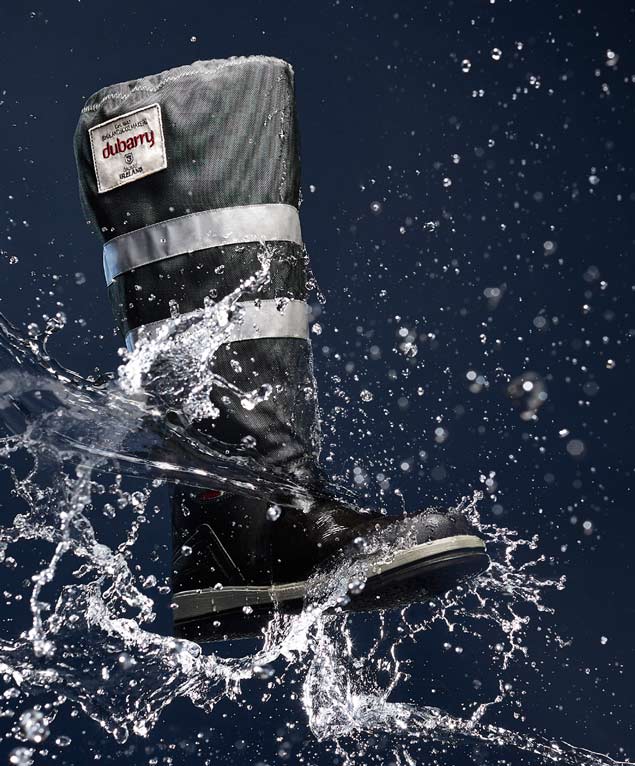 Dubarry's Crosshaven boot
Dubarry's Crosshaven boot
Built for the ocean, say Dubarry, the Crosshaven Boot is designed for high performance when facing the most challenging of elements. Crosshaven’s most striking feature is the integral gaiter, which is made with a lightweight, high abrasion, water repellant fabric and adjustable draw-cord collar that secures foul weather gear and prevents wash back.
It also houses a drainage mesh for optimal water release and features high-visibility bands. It is thermally insulated, utilising a 350g GORE-TEX® Duratherm membrane for extra warmth and waterproofness, combined with a thermally-lined footbed, which provides the boot with full insulation. Reinforced toe and heel parts utilise Dubarry’s unique D-Chassis System.
This two-part foot support system uses a moulded RPU frame that minimizes heel pronation by adding extra support, protection and control. Crosshaven also has finger pulls for easy foot entry and ExtraFit™ sizing.
In Ireland, Dubarry Crosshaven is available from leading chandleries including Viking Marine and CH Marine
Zhik’s New Isotak X Nominated for METS DAME Award
Australian sailing clothing specialist, Zhik’s innovative new ‘modular’ ocean racing gear, Isotak X has been nominated for a DAME Award at METS 2017, the important Marine world trade fair in Holland next month.
The all new Zhik Isotak X ocean range is the result of extensive development work with the Dongfeng Race Team and team AkzoNobel, who are currently wearing it in their quest to win the Volvo Ocean Race 2017-18.
According to Liz Rushall of Zhik, the breakthrough Isotak® X design developments includes:
• the new Hydrovision™ hood with a completely clear ‘see through’ visor to protect the face and give great all round vision
• the ‘Adaptive™’ hood and collar on the Isotak X Ocean Smock and Drysuit, enabling the modular hood-collar unit to be inter-changed with different balaclavas for different weather conditions
• newly enhanced Reziseal™ system for the neck and cuffs - soft, stretchy, durable and comfortable and fantastic at keeping water out.
In Ireland, Zhik is available from leading chandleries including Viking Marine and CH Marine
The swedish brand Sail Racing, the marine clothing brand with a focus on advanced racing gear for 'sailing athletes', has launched its new technical collection 'REFERENCE'.
The collection is designed in Sail Racing Design Lab to cover the sailor's needs in high performance racing, with garments made in GORE-TEX® Stretch, lightweight WINDSTOPPER and All-Way Stretch Quickdry.
”The Reference collection is the focus of all the knowledge we acquired, working in close corporation with ORACLE TEAM USA in their campaign to defend the 35th America’s Cup. The design of the Reference products follows the caharacteristics and aesthetic of our true DNA. We have put our heart and soul into creating this collection” says Henric Vikestam, Head of Sail Racing Design & Production.
The products in the Reference Collection are made in three color settings and are now available at Sail Racing Club House and online at sailracing.com for shipping worldwide.
On July 7, 1977, the Sail Racing brand was officially registered and was re-launched 1999. Today, Sail Racing International AB is a highly specialised company based in Sweden. All Sail Racing products are available globally online here


























